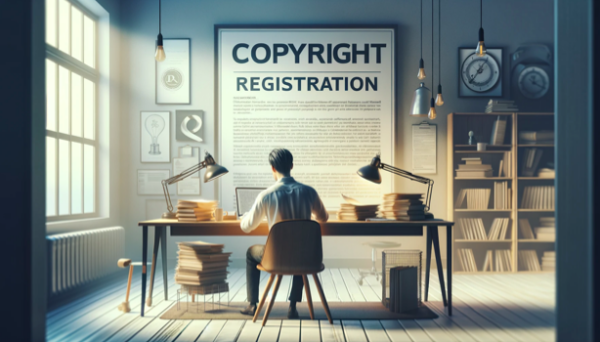In the realm of intellectual property rights, understanding the mechanisms that protect creative works is essential for both creators and users. Intellectual property rights ensure creators control the use and distribution of their works, encompassing literature, music, art, and software.
Copyright law grants exclusive rights to creators, allowing them to manage how their material and ideas are used and ensuring they receive recognition and financial benefits. Recently, Creative Commons (CC) licenses have emerged as an alternative to traditional copyright. CC licenses offer flexible protections for authors, artists, and educators, promoting sharing and collaboration. Creative Commons Licensing represents a significant evolution from traditional copyright laws, enabling authors to retain copyright while permitting the publication and reuse of their work through various licenses.
This article will delve into the specifics of both copyright and CC licenses, explore the various types of CC licenses available, compare their key features, and discuss the practical and legal implications for creators and users alike. Let’s compare book copyright vs creative commons license.
Understanding Copyright Law
Copyright is a legal concept that grants creators exclusive rights to their original works, such as books, music, films, and artworks. These rights allow creators to control how their works are used, distributed, and reproduced, ensuring they can benefit financially and receive proper attribution.
Copyright law is governed by national legislation and international treaties like the Berne Convention. It automatically protects eligible works upon their creation, without requiring registration. This protection covers both published and unpublished works, providing the creator with the exclusive right to reproduce, distribute, perform, display, or create derivative works based on the original.
The duration of copyright protection varies by country but generally, copyright protection lasts for the creator’s lifetime plus an additional 50 to 70 years after their death. The U.S. Copyright Office plays a crucial role in this by offering the option to register works for additional copyright licenses, which can provide added protections. Understanding copyright law and the potential need for legal assistance in navigating it is important for creators.
Your Publishing Journey Awaits – Start NowFor instance, when an author writes a book, they hold the copyright, allowing them to decide how the book is published and distributed. In contrast, if the same book is released under a Creative Commons license, the author may permit others to share, adapt, or even use the work commercially, depending on the specific CC license chosen. This flexibility can enhance the dissemination and impact of the work while still granting the author recognition and certain controls.
Creative Commons License
A Creative Commons (CC) license is a type of public copyright license that enables creators to grant permission for others to use, share, and build upon their work while retaining some rights. The purpose of CC licenses is to offer a flexible range of protections and freedoms for authors, artists, educators, and other creators, facilitating the sharing and collaborative improvement of creative content. These licenses help to increase the accessibility and distribution of creative works, fostering a culture of openness and innovation.
The Creative Commons organization, founded in 2001, is a nonprofit entity that developed and maintains these licenses. Its mission is to promote the sharing and reuse of creativity and knowledge through free legal tools. Creative Commons provides a suite of licenses that creators can use to customize the level of permissions they wish to grant to the public. These licenses grant the public up-front permissions to use works under certain standardized conditions, ranging from allowing only non-commercial uses of a work with attribution to permitting any type of use with few restrictions.
The Creative Commons website (creativecommons.org) is a comprehensive resource for understanding and applying CC licenses. It offers detailed information about each type of license, guidance on how to choose the appropriate license for one’s work, and tools for marking works with a CC license. The website also features a searchable database of CC-licensed works, facilitating easy discovery and use of content that is free to share and adapt within the specified terms.
Types of Creative Commons Licenses
Creative Commons offers six main licenses, each providing different levels of permissions and restrictions to users. These licenses are part of the various CC license options available, which grant the public permission to use works under standardized conditions while ensuring that creators retain their copyrights and get credit for their work. These licenses are designed to accommodate a range of needs and preferences regarding how a creator’s work can be used, shared, and modified.
- CC BY (Attribution)
- Explanation: This license allows others to distribute, remix, adapt, and build upon the work, even commercially, as long as they credit the original creator.
- Example: An artist publishes a photo under CC BY. Other creators can use the photo in their projects, including for commercial purposes, provided they give proper attribution to the artist.
- CC BY-SA (ShareAlike)
- Explanation: This license permits others to remix, adapt, and build upon the work even for commercial purposes, as long as they credit the original creator and license their new creations under identical terms.
- Example: A musician releases a song under CC BY-SA. Others can create remixes or covers and use them commercially, but any new works must also be shared under the same license.
- CC BY-ND (NoDerivatives)
- Explanation: This license allows for redistribution, both commercial and non-commercial, as long as the work is passed along unchanged and in whole, with credit to the creator.
- Example: A writer releases an essay under CC BY-ND. People can share the essay with others, but they cannot change it or use it to create derivative works.
- CC BY-NC (NonCommercial)
- Explanation: This license lets others remix, adapt, and build upon the work non-commercially, and although their new works must also acknowledge the original creator and be non-commercial, they don’t have to license their derivative works on the same terms.
- Example: A researcher publishes a paper under CC BY-NC. Other academics can use the paper for educational purposes or in non-commercial research, provided they credit the original author.
- CC BY-NC-SA (NonCommercial-ShareAlike)
- Explanation: This license allows others to remix, adapt, and build upon the work non-commercially, as long as they credit the creator and license their new creations under identical terms.
- Example: A filmmaker releases a documentary under CC BY-NC-SA. Other filmmakers can use footage from the documentary in their own non-commercial projects, but those projects must also be licensed under CC BY-NC-SA.
- CC BY-NC-ND (NonCommercial-NoDerivatives)
- Explanation: This license is the most restrictive, allowing others to download the works and share them with others as long as they credit the creator, but they can’t change them in any way or use them commercially.
- Example: A photographer releases images under CC BY-NC-ND. Others can share the images online with proper credit but cannot modify them or use them for commercial purposes.
Explanation of License Terms:
- Attribution: Credit must be given to the creator.
- Commercial Use: Permission to use the work for profit.
- NonCommercial: Use of the work for non-profit purposes only.
- Derivative Works: Adaptations or modifications of the original work.
- ShareAlike: New works based on the original must be licensed under the same terms.
- No Derivatives: No changes or adaptations can be made to the original work.
By understanding these licenses and terms, creators can effectively choose the right type of protection and permissions for their works, ensuring their creations are protected and used in ways that align with their intentions.
Comparing Copyright and Creative Commons License
The primary difference between traditional copyright and Creative Commons (CC) licenses lies in the scope of permissions and restrictions they impose. Copyright law grants creators exclusive rights to their work, including reproduction, distribution, performance, and creation of derivative works. These rights automatically apply once the work is created and can only be waived or transferred through explicit permission.
Your Publishing Journey Awaits – Start NowProtection of Creative Work:
- Copyright: Offers comprehensive protection, ensuring that creators maintain complete control over how their works are used, modified, and monetized. It prevents unauthorized use and provides legal recourse for infringement.
- Creative Commons Licenses: While still providing protection, CC licenses allow creators to grant specific permissions upfront. These licenses enable easier sharing and collaboration, tailored to the creator’s preferences regarding how their work can be used.
Permissions and Restrictions:
- Copyright: All rights are reserved. Users must obtain explicit permission from the copyright holder to use the work, especially for commercial purposes or creating derivative works.
- Creative Commons Licenses: Some rights reserved. These licenses vary in terms of permissions, ranging from allowing any type of use with attribution (CC BY) to restricting use to non-commercial purposes without derivatives (CC BY-NC-ND).
Examples:
- Copyright: An author writes a novel and retains full copyright. Any reproduction, adaptation, or commercial use requires the author’s permission. Unauthorized use can lead to legal action.
- Creative Commons License: A musician releases a track under a CC BY-NC-SA license. Others can use the track for non-commercial projects, remix it, and share their new creations under the same license, as long as they credit the musician.
In summary, while copyright provides full control and legal protection for creators, Creative Commons licenses offer a flexible licensing approach that encourages sharing and collaboration, with varying levels of permissions to suit different needs and goals.
Practical Implications for Creators
Choosing between traditional copyright and a Creative Commons (CC) license depends on a creator’s goals and how they want their work to be used.
Why Choose One Over the Other:
- Copyright: Creators who want full control over their work, ensuring they can monetize it and restrict its use, often prefer copyright. It provides comprehensive legal protection against unauthorized use and allows creators to negotiate licenses on a case-by-case basis.
- Creative Commons License: Creators who want to share their work more freely and encourage collaboration might opt for a CC license. This is particularly useful for educational resources, open-source projects, and creative communities focused on accessibility and innovation.
Impact on Commercial Use and Derivative Works:
- Copyright: Maintains exclusive rights, requiring explicit permission for any commercial use or creation of derivative works. This can maximize revenue but limits how widely the work is shared.
- Creative Commons License: Depending on the specific license, it can allow for broader use, including non-commercial sharing and adaptation. This can increase the work’s visibility and impact but might reduce potential commercial earnings.
Considerations for Protecting Creative Materials:
Creators must consider their long-term goals, the potential for revenue, and the desired reach of their work. Copyright offers robust protection, while CC licenses provide flexibility and ease of sharing.
Public Domain Dedication and Worldwide Public Domain Impact:
- Public Domain Dedication: Creators can use tools like CC0 to waive all rights and place their work in the public domain, allowing anyone to use it freely. This maximizes accessibility and global impact but sacrifices all control and potential revenue.
- Worldwide Public Domain: Works in the public domain can be freely accessed and used by anyone worldwide, fostering cultural and educational exchange but requiring creators to forgo exclusive rights.
By carefully considering these factors, creators can choose the right approach to publish and protect their work while achieving their desired balance of control, accessibility, and impact.
Legal Considerations and Compliance
When using creative works, understanding the legal implications of copyright versus Creative Commons (CC) licenses is crucial to avoid legal issues and ensure compliance.
Using Copyrighted Material vs. CC-Licensed Material:
- Copyrighted Material: Unauthorized use of copyrighted material can lead to copyright infringement, resulting in legal penalties, fines, or lawsuits. Users must obtain explicit permission from the copyright holder for any use beyond what is legally permitted.
- CC-Licensed Material: Using works under a CC license requires adherence to the specific terms of the license, such as attribution, non-commercial use, or no derivative works. Proper use of CC-licensed material typically avoids legal complications.
Understanding Fair Use:
- Fair Use: A legal doctrine that allows limited use of copyrighted material without permission for purposes such as criticism, commentary, news reporting, teaching, scholarship, or research. Fair use is determined by factors like the purpose and character of use, the nature of the copyrighted work, the amount used, and the effect on the work’s market value.
Copyright Infringement and Its Consequences:
- Infringement: Unauthorized use of copyrighted material constitutes infringement, which can result in legal actions, financial damages, and injunctions to cease the infringing activity. Understanding and respecting copyright laws are essential to avoid these consequences.
Importance of Proper Attribution and Credit:
- Attribution: Both copyright and CC licenses often require proper attribution to the original creator. Failure to provide credit can lead to claims of infringement or breaches of CC license terms. Proper attribution acknowledges the creator’s contribution and respects their rights.
By understanding and following these legal aspects, users can navigate the complexities of copyright and CC licenses, ensuring they use creative works responsibly and legally, while creators can protect their rights and maintain control over their work.
Conclusion
In summary, understanding the distinctions between copyright and Creative Commons (CC) licenses is essential for both creators and users of creative works. Copyright provides comprehensive protection, ensuring creators retain full control over their work and can monetize it effectively. In contrast, CC licenses offer a range of permissions that facilitate sharing and collaboration, tailored to the creator’s preferences.
The choice between copyright and CC licenses depends on the creator’s goals, whether prioritizing control and revenue or promoting accessibility and collective improvement. Both approaches have significant implications for commercial use, derivative works, and legal compliance.
Recognizing these differences helps creators make informed decisions about protecting their creative materials. By selecting the appropriate type of protection, creators can achieve their desired balance between safeguarding their rights and contributing to the wider creative community. Ultimately, the right choice empowers creators to maximize the impact and reach of their work while maintaining the necessary protections.
Your Publishing Journey Awaits – Start Now







